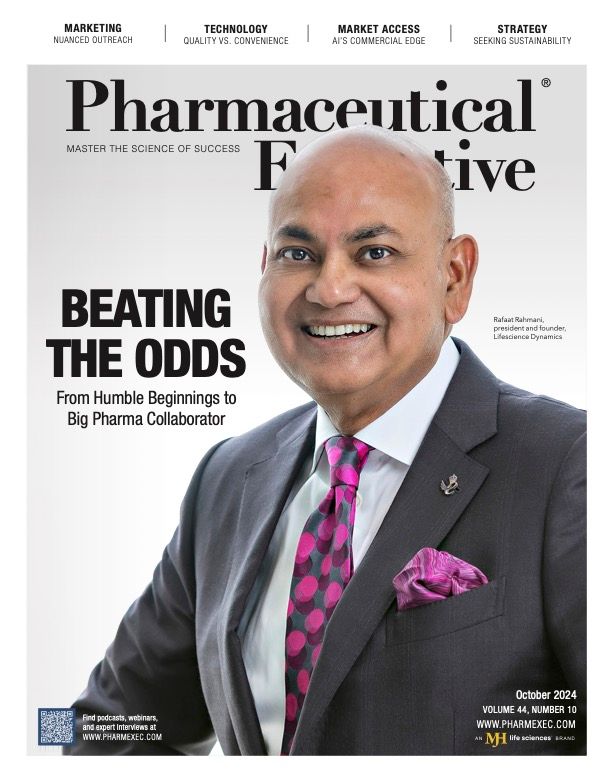‘Selling a Vision’: Today’s Playbook for Startups
The Big Pharma commercialization playbook doesn’t work for emerging life sciences companies bootstrapping their way up. Exploring three strategies that could be the ingredients of a winning formula for startups.

The pharmaceutical giants often have the luxury of what might be akin to bringing a Ferrari to a street race—with the massive marketing budgets and extensive sales teams at their disposal.
But this approach simply isn’t an option for smaller life sciences companies, especially startups. They can’t afford the Ferrari, so they need a souped-up car that has been lovingly assembled from just the right found parts. It can be especially jarring if you make the transition from a more established company to a startup (I can speak from experience). You have to shift your mindset from spending a lot of money in order to make money to being more selective (and hopefully strategic) with your limited budget.
In my role as chief commercial officer for several young healthcare companies, I’ve seen firsthand that startups often require a more delicate approach—one that prioritizes efficiency and innovation over sheer financial firepower. Rather than attempting to be something they aren’t, smaller companies should embrace their own unique strengths: creativity, strategic collaboration, and a willingness to challenge the status quo.
In practice, this means focusing on strategies that are not only cost-effective but also more attuned to the needs of a market that changes very quickly. At the end of the day, healthcare is fundamentally delivered by human beings. That’s still true today in the artificial intelligence era. Even with the most highly skilled and well-trained individuals, healthcare is hard to scale. I’ve seen the most successful products still run into growth challenges along the way, posing especially tough obstacles for resource-strapped startups.
So how to grow when the tactics of Big Pharma aren’t available to you? I recommend three strategies in particular—all of which have worked for companies I have led and advised over the years.
1. Engage with key opinion leaders (KOLs). Unlike Big Pharma companies, startups can’t afford to rely solely on brute force marketing tactics. Instead, we must cultivate meaningful relationships with the people who can move the needle on public opinion; thought leaders, industry experts, and influencers. Every startup in our industry needs to be thinking carefully about how to most effectively engage with them to co-create solutions that resonate with both healthcare professionals and patients.
The savviest companies choose a senior leader—say, a chief medical officer—to focus on cultivating these relationships. They should be “curious connectors” who ask the right questions, bring the right experts to the table, and engage them effectively.
The good news is that KOLs often enjoy working with startups because they are heard more, face less red tape, and see their ideas implemented quickly, leading to tangible innovations that improve patient care. However, many companies fail to capitalize on this opportunity because they either lack the internal expertise to identify the right influencers—or they underestimate the importance of building these relationships early on.
2. Think about product iteration. Rather than aiming for a single, splashy launch, startups can benefit from a more iterative approach, releasing multiple versions of their product based on real-world feedback. This not only allows for continuous improvement but also enables startups to adapt more quickly to changing market dynamics.
The challenge here is that many startups aim for perfection on the first try and hesitate to release a product that isn’t fully polished. Embracing an iterative mindset requires a cultural shift toward valuing progress over perfection.
3. Finally, understanding the workflow problem is essential for startups aiming to disrupt the healthcare industry. By identifying pain points in the existing system and offering innovative solutions, startups can position themselves as valuable partners for healthcare institutions and providers.
By solving workflow issues, startups can integrate more seamlessly into the healthcare ecosystem. This approach is often overlooked because it requires deep insights into the operational aspects of healthcare delivery, which many startups may not initially have. Moreover, it involves not just selling a product but also selling a vision of improved efficiency and effectiveness.
In short, the rule of thumb for startups is similar to any small business bootstrapping its way up: play to your strengths. Learn to see limitations as forcing mechanisms for creativity. By challenging the conventional wisdom and leveraging their unique strengths, startups can carve out a niche for themselves in a landscape that only grows more competitive by the day.
Jessica Meng is Chief Commercial Officer, CareDx

The Misinformation Maze: Navigating Public Health in the Digital Age
March 11th 2025Jennifer Butler, chief commercial officer of Pleio, discusses misinformation's threat to public health, where patients are turning for trustworthy health information, the industry's pivot to peer-to-patient strategies to educate patients, and more.
Navigating Distrust: Pharma in the Age of Social Media
February 18th 2025Ian Baer, Founder and CEO of Sooth, discusses how the growing distrust in social media will impact industry marketing strategies and the relationships between pharmaceutical companies and the patients they aim to serve. He also explains dark social, how to combat misinformation, closing the trust gap, and more.